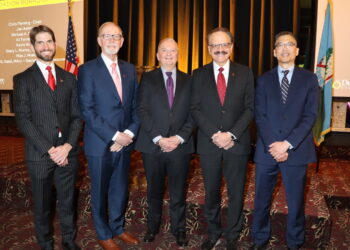OKLAHOMA (OBV) – Unemployment among women slightly rose in May in both Oklahoma and across the rest of the United States.
Data from the U.S. Department of Labor’s Bureau of Labor Statistics shows that the unemployment rate for adult women (20 years and over) increased to 3.3 percent in May.
Unemployment among women across the nation was 3.1 percent in both March and April.
The May 2023 unemployment rate for women is lower than the May 2022 rate, which was 3.4 percent.
Unemployment among women in Oklahoma was 3.1 percent, a slight increase from April’s 3 percent rate, but significantly decreased from the May 2022 rate of 3.8 percent, according to Oklahoma Employment Security Commission (OESC) data.
Department of Labor data shows that unemployment among men across the nation was 3.5 percent in May, higher than March’s 3.4 percent and April’s 3.3 percent rates. Unemployment among men in Oklahoma remained steady from April to May at 3.3 percent.
Research has shown that lack of childcare is often a reason women leave the workforce.
A U.S. Chamber of Commerce Foundation study states that 58 percent of working parents reported leaving their job because they could not find viable childcare. Also, 32 percent of women surveyed said having to be home to care for family members made returning to work difficult.
Legislators filed multiple bills this past legislative session to increase the availability of childcare in Oklahoma and get more parents back into the workforce.
Gov. Kevin Stitt signed House Bill 2452 into law in May.
HB 2452 streamlines regulations pertaining to the licensing of childcare facilities across the state, allowing DHS-licensed family home childcares to operate at licensed capacity without local municipal oversight. The bill enables childcare centers to open and operate safely and efficiently, which will ensure parents their children are receiving consistent, quality care while they are at work, according to the bill’s author, Rep. Suzanne Schreiber, D-Tulsa.
Seasonal changes caused by weather, major holidays and the opening and closing of schools can also be a factor in employment fluctuations among women, according to the Department of Labor.
“These adjustments make nonseasonal developments, such as declines in employment or increases in the participation of women in the labor force, easier to spot,” Department of Labor officials state.

















